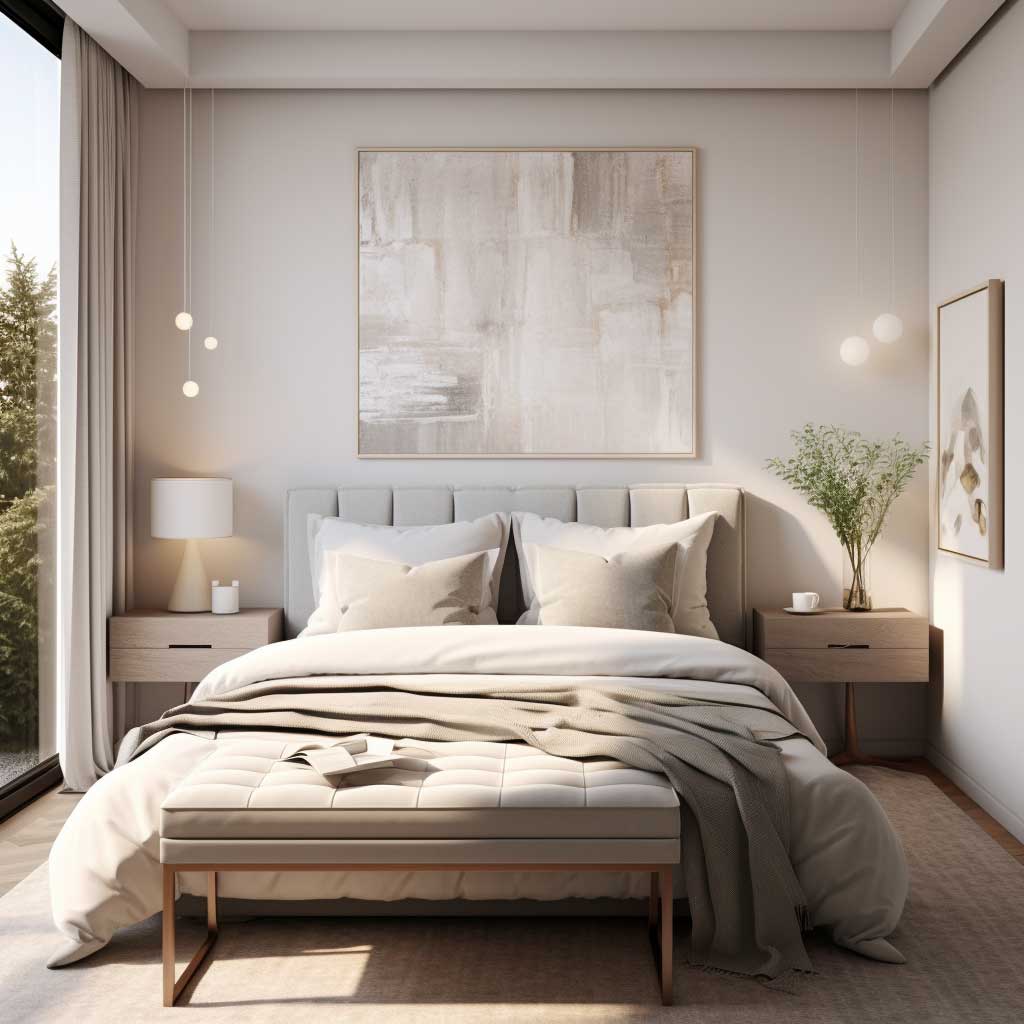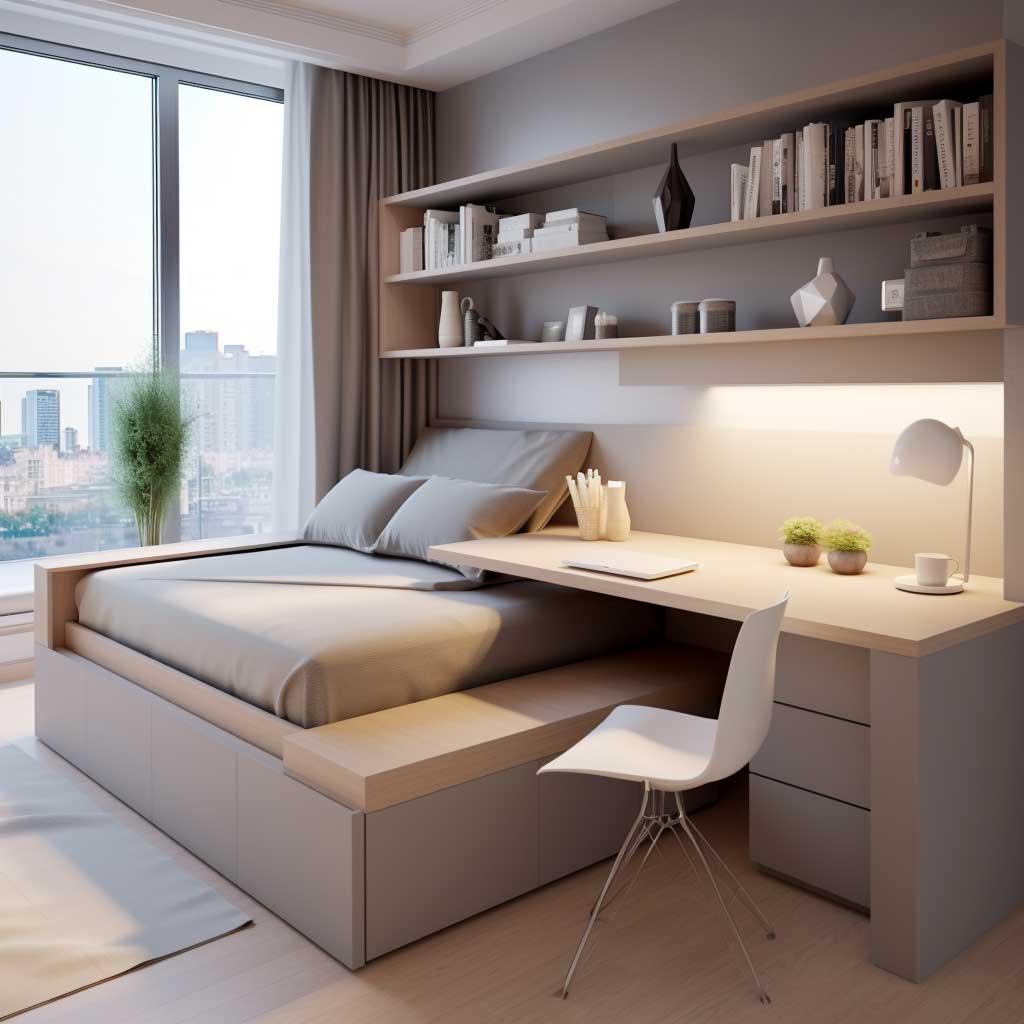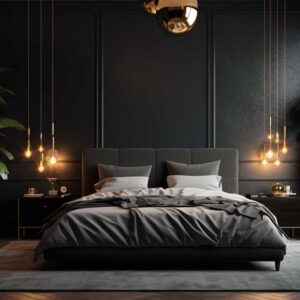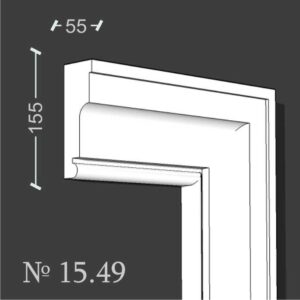Minimalism, with its emphasis on simplicity and functionality, is a design philosophy that aligns perfectly with the challenges of small bedroom interior design. By stripping away the unnecessary and focusing on the essential, minimalism can transform a cramped bedroom into a serene, spacious sanctuary. This guide will explore how to weave the principles of minimalism into small bedroom interiors, ensuring a harmonious blend of form and function.
Simplicity Reigns in Minimalist Small Bedroom Design




In the realm of small bedroom interior design, the challenge often lies in creating a sense of space and serenity amidst limited square footage. Minimalism, with its core principle of simplicity, offers a solution. By stripping away the unnecessary and focusing on the essence, a minimalist approach can transform a small bedroom into a tranquil oasis.
The beauty of minimalism lies in its restraint. It’s not about having less but making the most of what you have. In a small bedroom, this philosophy translates to a design that prioritizes function and aesthetics in equal measure.
Starting with the color palette, minimalist bedrooms often lean towards muted, neutral tones. Whites, grays, and beiges not only create a calming atmosphere but also enhance the perception of space. These colors reflect light, making the room appear brighter and more open.
Furniture in a minimalist small bedroom should be chosen with intention. Instead of multiple pieces, opt for fewer, more functional items. A platform bed with built-in storage, for instance, eliminates the need for additional dressers or cabinets. Wall-mounted shelves or desks can free up floor space, making the room feel less crowded.
Decluttering is a cornerstone of minimalism. In a small bedroom, this means doing away with unnecessary items and decor. Every item in the room should serve a purpose, be it functional or aesthetic. This doesn’t mean the room should be devoid of personal touches. A single piece of art or a carefully chosen decorative item can add warmth and character without overwhelming the space.
Lighting plays a pivotal role in minimalist design. Instead of bulky floor lamps or table lamps, consider wall-mounted lights or pendant lights. These provide ample illumination without consuming valuable space. Natural light, too, is invaluable. If the room has windows, keep them unobstructed to allow as much light in as possible.
Simplicity, when executed with thought and precision, can lead to profound beauty. In small bedroom interior design, minimalism offers a pathway to create spaces that are both functional and aesthetically pleasing. By embracing simplicity, homeowners can craft bedrooms that serve as sanctuaries, offering rest and rejuvenation amidst the chaos of daily life.
Neutral Tones Elevate Small Bedroom Interior Elegance




Color has the power to influence mood, perception, and even the apparent size of a room. In small bedroom interior design, the choice of color becomes even more critical. Neutral tones, with their subtle elegance and versatility, have emerged as a favorite in creating spacious, sophisticated bedroom interiors.
Neutral tones, ranging from whites and creams to grays and tans, are often associated with simplicity and calm. In a small bedroom, these colors can work wonders. They reflect light, making spaces appear larger and more open. But beyond this functional aspect, neutrals bring an inherent elegance to interiors.
A bedroom painted in soft beige or off-white immediately feels serene and inviting. These colors create a blank canvas, allowing other design elements to shine. Whether it’s a piece of art, a textured rug, or a wooden furniture piece, everything stands out against a neutral backdrop.
The versatility of neutral tones is another advantage. They can adapt to various styles, from modern and minimalist to rustic and traditional. For instance, a small bedroom with a contemporary design might feature gray walls, white bedding, and sleek, black furniture. On the other hand, a more bohemian space could incorporate creams, tans, and earthy browns, complemented by natural wood and woven textures.
Layering is a technique that can enhance the depth and richness of a neutral palette. Different shades of the same color, when used together, can create a harmonious and cohesive look. For instance, a bed with crisp white linens against a soft gray wall, paired with a deeper gray throw or rug, adds dimension without deviating from the neutral theme.
Textures play a crucial role in preventing neutral spaces from feeling flat or monotonous. Incorporating elements like a tufted headboard, a knitted throw, or a shaggy rug can introduce tactile variety. These textures not only add visual interest but also enhance the room’s coziness.
Accessories in a neutral small bedroom interior should be chosen with care. Metallic accents, like gold or brass, can add a touch of luxury. Plants, whether real or faux, introduce a splash of color and vitality. Mirrors, with their reflective surfaces, can further amplify light and space, making the room feel larger.
Neutral tones, with their understated elegance, offer a timeless solution for small bedroom interior design challenges. They create a sense of space, serenity, and sophistication, proving that sometimes, less truly is more. By embracing neutrals and complementing them with thoughtful design choices, homeowners can craft spaces that are both stylish and soothing.
Functional Furniture Choices for Minimalist Small Bedroom Spaces




Furniture is a defining element of any interior space. In the context of small bedroom interior design, the choice of furniture becomes even more pivotal. With the rise of minimalism, the focus has shifted towards functional, space-saving furniture that doesn’t compromise on style.
The essence of minimalism lies in intentionality. Every piece of furniture in a minimalist small bedroom should serve a clear purpose. This functional approach ensures that space is optimized without feeling cluttered.
Beds with built-in storage are a prime example. These beds, often with drawers or compartments underneath, provide ample storage space for linens, clothes, or other items. This integrated storage solution eliminates the need for additional dressers or cabinets, freeing up valuable floor space.
Wall-mounted desks or fold-out tables are perfect for those who require a workspace within their bedroom. When not in use, these desks can be folded or tucked away, ensuring the room remains spacious. Paired with a sleek, ergonomic chair that can be stored underneath, this setup offers a functional workspace without overwhelming the room.
Floating or wall-mounted nightstands and shelves are another space-saving solution. They provide essential storage and display space without consuming floor space. Their elevated design also creates a sense of openness, making the room feel less crowded.
Multi-functional furniture pieces, like ottomans that double up as storage or seating, or fold-out chairs that can be stowed away when not in use, exemplify the minimalist approach. These pieces ensure that every inch of the room is utilized efficiently.
In terms of aesthetics, minimalist furniture often leans towards clean lines, neutral colors, and sleek designs. However, this doesn’t mean the room should lack warmth or character. Incorporating natural materials like wood or adding soft textiles can introduce warmth and texture, ensuring the space feels inviting.
Functional furniture choices are the backbone of minimalist small bedroom interior design. By prioritizing pieces that serve multiple purposes and complement the room’s aesthetics, homeowners can create spaces that are both practical and pleasing to the eye. In the world of minimalism, every piece of furniture is a testament to thoughtful design, ensuring that even the most compact bedrooms can be transformed into functional, stylish sanctuaries.
Incorporating minimalism in small bedroom interiors is more than just a design choice; it’s a lifestyle reflection. By embracing simplicity, decluttering, and making intentional furniture and decor selections, homeowners can create spaces that breathe. These minimalist bedrooms, free from distractions and excess, become havens of peace, offering a respite from the bustling world outside.












